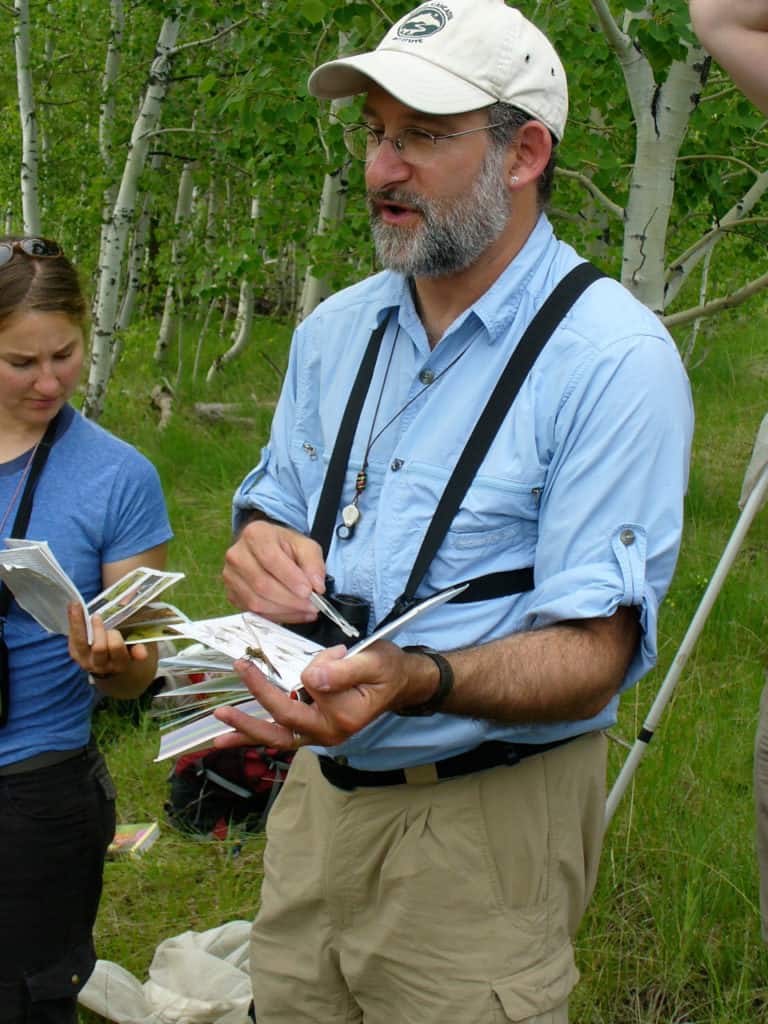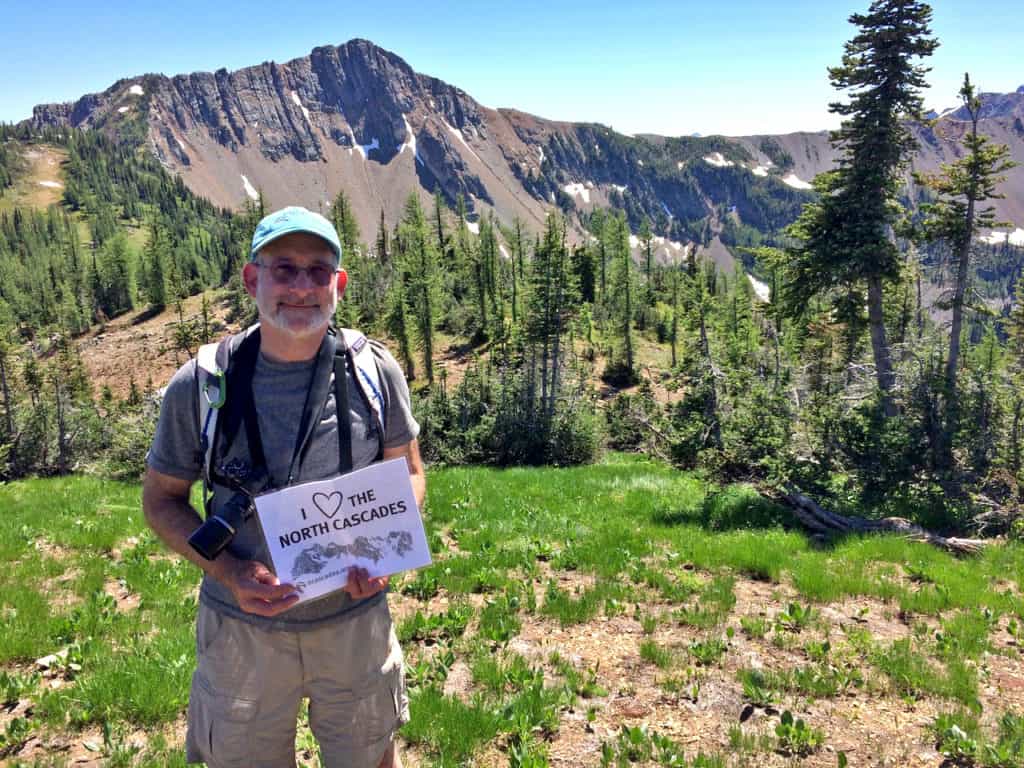
Follow The River: An interview with Saul Weisberg
Saul Weisberg remembers when it hit him. In the early 1980s, he and two friends were on a climbing trip in the Pickets, a notoriously hard-to-reach chain of icy peaks high in the North Cascades. After 10 days of sipping snow melt in the high country, he recalls coming down and drinking deeply from mountain streams that eventually flowed into Big Beaver Creek. They crossed over the creek on giant cedar logs, or waded along the edges as they followed it down through lush forest to arrive at Ross Lake and finally, the Skagit River. On the drive home, they pulled over and sat on the river bank. That’s when he knew.
“I had this sense that this place was all connected,” Weisberg recalls. “And I was a part of it. I didn’t really know what that meant, but it felt like, ‘This is home. This is a good place to call home.’”
Born in New York City, Weisberg first came to the area in 1975 to work on a commercial salmon troller off the Washington coast. He returned in 1977 to be a fire lookout in the southern Cascades, then worked in fish hatcheries, studied shorebirds, and eventually became a climbing ranger in North Cascades National Park. Through the years, he fell in love with the Skagit and its people. But he couldn’t ignore the threats he saw coming from every direction – rampant clearcutting, sprawling strip malls, declining salmon runs. Along with some friends, he asked himself, “How can I help?”
Weisberg’s answer was to bring people to the mountains he loved, at the headwaters of the river that spoke to him. In 1986, he founded North Cascades Institute, which he describes as a conservation organization that uses education as their tool. The goal was to “get kids outside to have transformative educational experiences in nature,” he says. Today, Weisberg is the executive director and now every year more than 8,000 people – grade school kids, high schoolers, families, graduate students, and adults go to the North Cascades Environmental Learning Center on Diablo Lake to explore and learn about the wild world. “We believe that those shared experiences really get people excited about a place and lead to them wanting to learn more. We help get people engaged in their community and it grows from there.”
The hope is that kids (and adults) who connect with nature will care more about it. And for Weisberg, building community is just as important. He believes that shared experiences create community, and that can heal the divides of the past and help communities thrive in the face of daunting economic and environmental changes – in the Skagit and beyond.
“We may not always be in agreement. We may be on different sides of those experiences. But we share experiences because we live here together, and that is really powerful. Sometimes we forget how important that is.”
Saul Weisberg
In the early 1990s, Weisberg worked on the Skagit Watershed Education Project, which brought Skagitonians together from across the political spectrum – loggers, fishers, environmentalists, and land management agencies – to discuss how to reach children, specifically, and what to teach fourth graders about this place they call home. Despite their differences, they discovered that they shared important values. “At the end, we had agreement that we all loved this place, we all wanted our kids to get out and experience it deeply, to be able to stay here and find work here, and everything else that communities need to succeed. We all believed that was possible. And I think it is possible.”
Skagit Valley’s interconnectedness gives Weisberg this sense of hope, especially with the stark political divides across the country. “I think I’m more hopeful about the Skagit right now than I am about our country,” he says. “And that’s because we are still talking to each other here. We are still showing up for meetings and picnics and celebrations. To me, that’s what makes this community special… [It] still feels like the parts are all still there. They all need each other at some level to be sustainable in the future if we want our kids to be able to stay here and live here and work here.”
That interdependence is apparent in how people identify with being from the Skagit more than being from any individual town, says Weisberg. “That is pretty unique. I hope it doesn’t change. Because identifying with a river, with a watershed, with a county, is really different. It’s broad. It means that you have neighbors that are human and not human that you need to know because you need to be in their lives.”

The idea of community for Weisberg goes well beyond people, and that is reflected in the programs at the Institute’s Environmental Learning Center. “When students come together from different places and have these shared experiences, that pulls them together,” he says. “You spend three days or a week in a place, learning about that place, and now it’s part of your neighborhood. That sense of community now includes the natural environment, that big back yard that we all depend on. That’s the part that we all share. We might live in Rockport, or Burlington, or Anacortes, but we share this watershed, we share these amazing public lands. And that’s part of our shared experience.”
This expansive sense of community will help Skagit Valley adapt to the changes ahead, from population growth to climate change, says Weisberg. And not taking for granted all that the Skagit provides today – from protected public lands to local food – will help us preserve it for the future. “This place feeds us well,” he says. “We eat fish twice a week. We live in abundance. We have wildness around us. And we have rich cultures around us. We have indigenous cultures and we have libraries and museums and things that make the community strong. Another natural resource is the power of human imagination here and how we relate to all the other natural resources. Our imagination is a resource, too.”
In 2015, Weisberg published a book of poetry entitled Headwaters. The title poem was inspired by that fateful trip to the Pickets some 30 years ago.
Headwaters
With cupped hands
I bow and drink
each day
a different stream
many times
from the same river
and once,
the sea.
These themes resonate throughout Weisberg’s life, as if he’s been coming down the mountain all this time. “I used that title because it’s about all of these headwater streams of my life coming together – science and poetry and working in the woods and all these different pieces,” he explains. “But I think it’s true for the communities here, too.”

It seems ironic that Weisberg’s love for the high peaks of the North Cascades, born from many trips alone in the mountains, led him to bring people together. Yet it follows the natural path of the alpine stream flowing down the valley. “I came here for the mountains,” he says. “I stayed for the rivers.” He is doing more paddling now than climbing, and this fall he joined a new group of the Institute’s graduate students as they paddled the Skagit, from Marblemount all the way to saltwater. “That’s how we introduce them to this place,” he says. “Following the river.”

